Kramer of New York is one of those names dealers run across pretty frequently when sourcing costume jewelry. That usually means a company saw a good amount of success back when the jewelry was newly made. Nevertheless, it’s not a brand most fervent collectors get overly excited about. It might be on the uptick, though, since I’ve noticed pieces lingering in online shops being snatched up these days indicating a growing base of fans out there in jewelry land.
My personal opinion of Kramer jewelry? It’s always been pretty high. Some of the lines this company marketed in the 1950s are over-the-top gorgeous and many are undervalued today in comparison to rhinestone pieces sold by other companies. I was recently chatting about Kramer with a jewelry friend I’ve known for years, and we ran into some friendly differences of opinion about the company. While that’s fresh in my mind, I thought it would be a good time to feature Kramer and share some of that conjecture with you after a brief look at the company’s history.
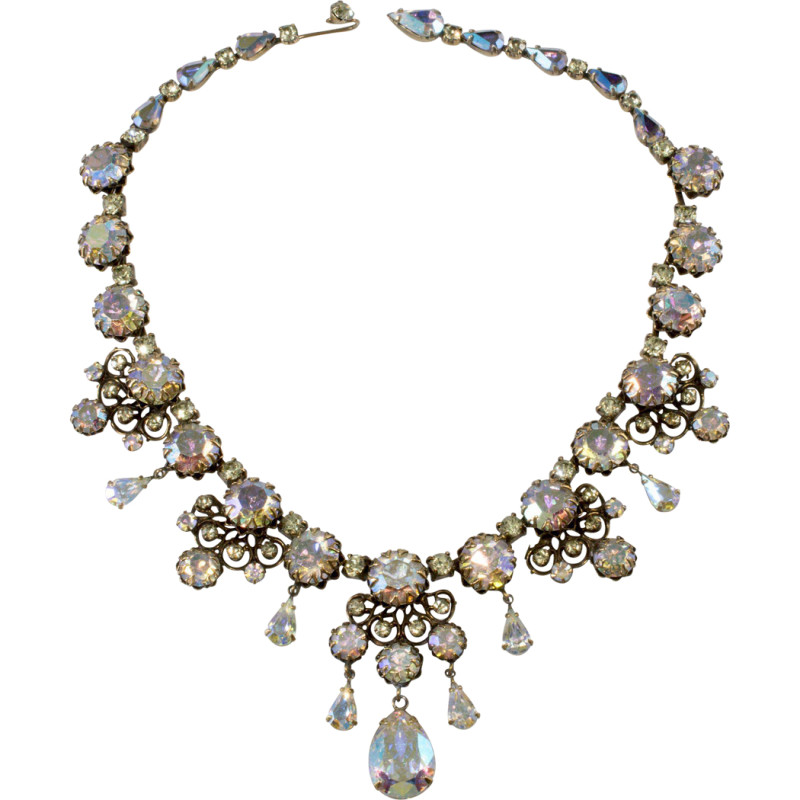
Courtesy Jay B. Siegel
Kramer of New York’s History
Louis Kramer established Kramer Jewelry Creations, Inc. in New York in 1943, as noted by jewelry historian Julia C. Carroll in her book Costume Jewelry 101. His brothers Morris and Harry also joined the firm, but Louis Kramer appears to have been the driving force behind the business. The company they ran together also did business as Kramer of New York, a name more well known by collectors since pieces are marked in that way or simply Kramer.
The company used the slogan “The Diamond Look by Kramer” in magazine ads for rhinestone jewelry dating to the 1950s. The designs featured in these ads are some of the most desirable Kramer pieces among avid jewelry collectors. “The Golden Look by Kramer” was used with gold plated jewelry devoid of stones during the same period, but those pieces aren’t in high demand even though they’re nicely made.
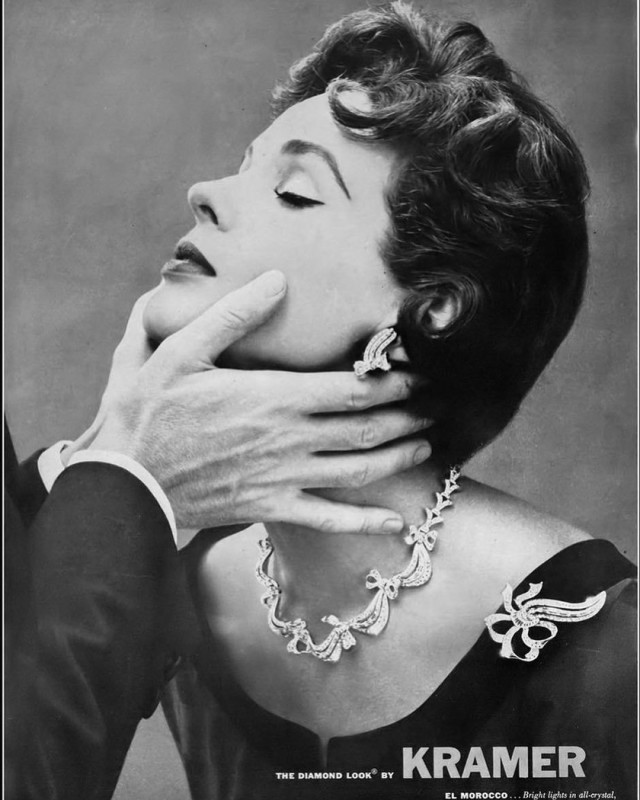
Kramer also collaborated with Christian Dior in the 1950s to market jewelry signed either Christian Dior by Kramer or Kramer by Dior. Those pieces are also highly valued. By the early 1960s, Frank Hess who worked designing for Miriam Haskell for many years joined Kramer to create a line of jewelry marked Amourelle as well.
Not much more is known about Kramer other than the company closed around 1980, according to Carroll. One question has remained over time, however. Did Kramer produce the jewelry they marketed for decades or was it made by other manufacturing firms known in the industry as jobbers?
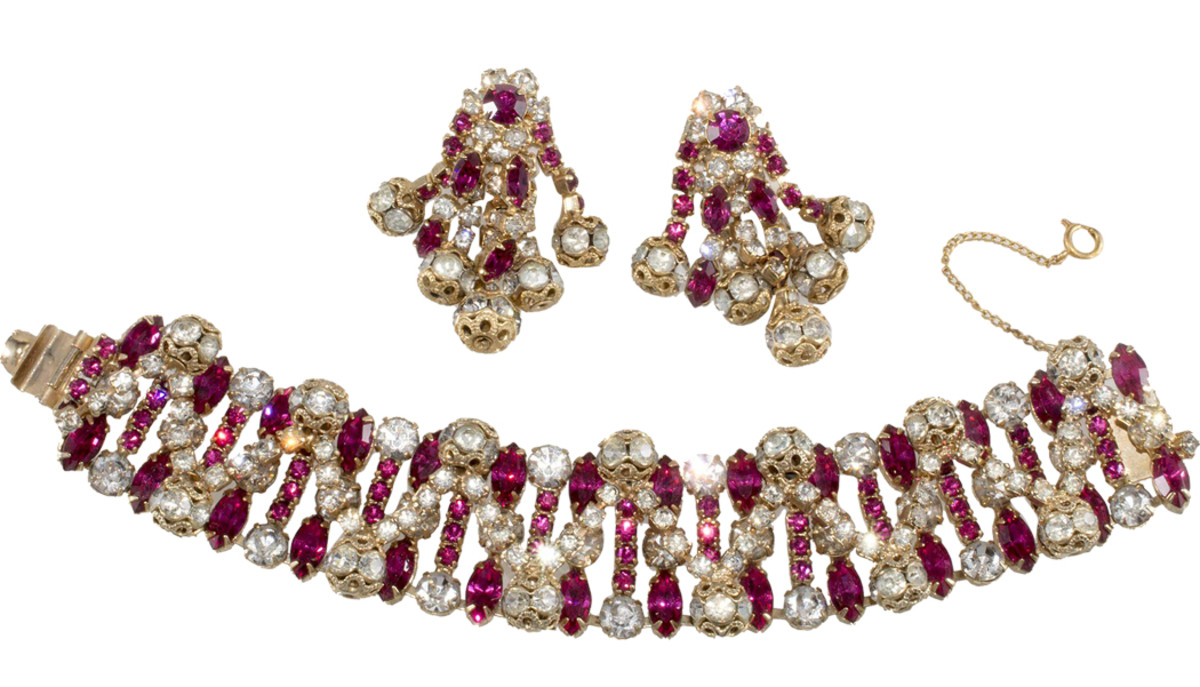
Courtesy Jay B. Siegel
A Manufacturer or a Marketer?
For as long as I can remember, I’ve heard people say that Kramer used jobbers rather than manufacturing jewelry. That seemed like it could be true since the styles and manufacturing techniques varied so widely in jewelry bearing one of their marks. The business didn’t stick with a look that defines most of the pieces branded Kramer or Kramer of New York in the way that Miriam Haskell did, for example. This was at the core of my discussion with an old friend recently, and she relayed that another jewelry historian we both know found in her research that Kramer employed around 200 workers at one time. That piqued my curiosity, so I decided to do some digging to see what else I could find.
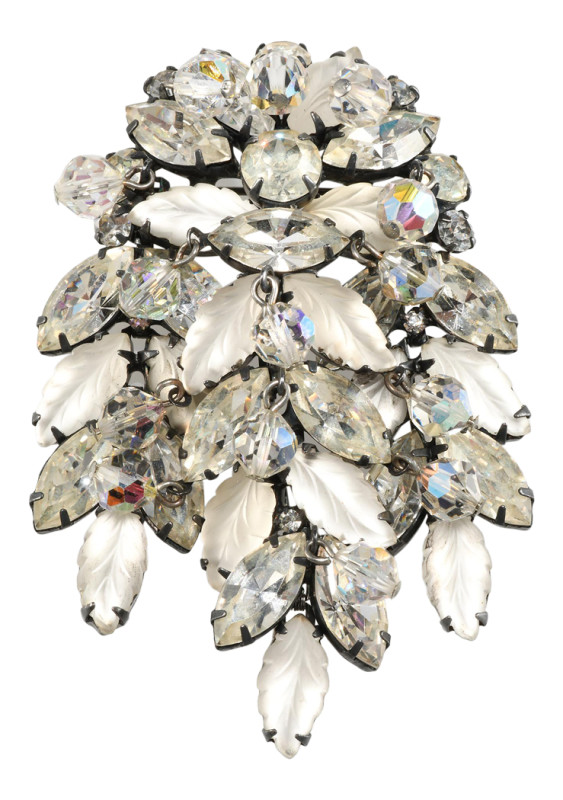
Courtesy Jay B. Siegel
As it turns out, beyond relayed word of mouth, there is some evidence that Kramer did manufacture jewelry. A 1952 edition of the “Defense Production Record” noted this in regard to Kramer Jewelry Co. of New York, N.Y.: “Request for permission to use present inventory of white metal alloy in manufacture of costume jewelry granted when Board concluded relief necessary to alleviate exceptional financial hardship and also to provide employment for workers in this industry.” They were authorized, between April 1, 1952, and Sept. 30, 1952, to use 2,750 pounds of white metal alloy in their inventory. This certainly points to manufacturing going on at Kramer since white metal is a primary component in plated costume jewelry.
I also found proof of a number of patents obtained by Louis Kramer during the mid- to late-1950s for jewelry including brooch and necklace designs. This points to Kramer protecting his designs in the same way that Boucher and Trifari did back in the day, but does that mean his business was manufacturing them? Given the documentation supporting a lawsuit filed by Kramer against Capri Jewelry, Inc. in 1956 for “copyright infringement and unfair competition,” it certainly seems so. Kramer is listed as engaging in “the designing, manufacturing and selling of costume Jewelry of creative designs.” On the other hand, Capri is described as being in “the business of selling costume jewelry to retailers. It does not manufacture its own jewelry.”
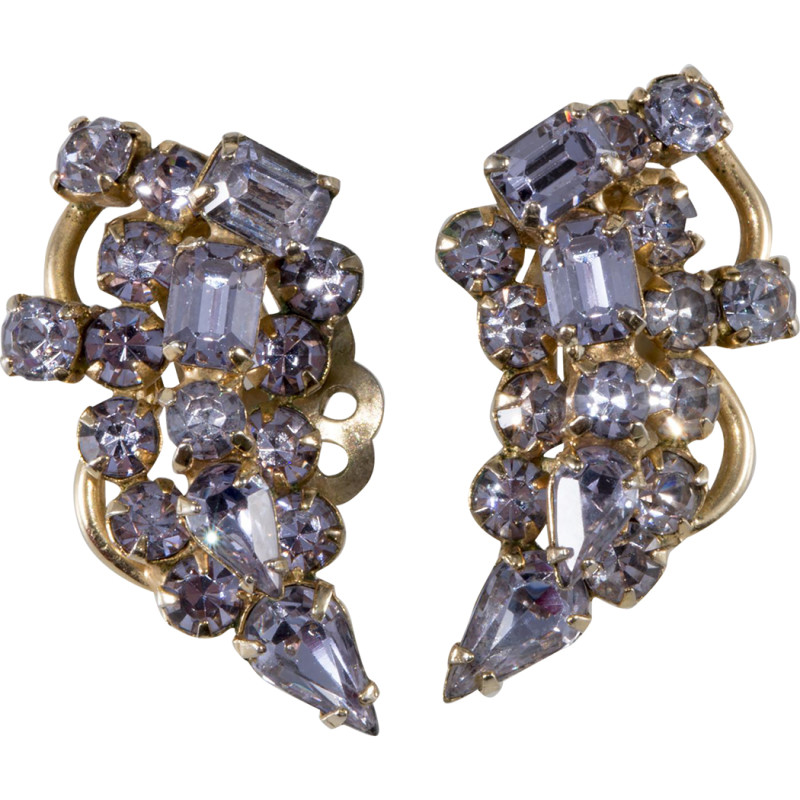
Courtesy Jay B. Siegel
In my mind, these resources do indicate that Kramer produced jewelry. Does that mean they never contracted other businesses to make jewelry for them or that they used jobbers more frequently after the 1950s? Those facts are yet to be discovered by jewelry researchers. For now, though, I think we can conclude that they did employ a fairly large staff of workers who were producing jewelry in New York during the 1950s.
What Makes Kramer Special?
One of the things I’ve always been attracted to is specialty stones in costume jewelry. That is, stones beyond the average round rhinestone. Kramer used several types of stones molded to look like leaves in designs that have always been my favorites. Some look more like art glass with an iridescent finish and others are frosted glass stones.
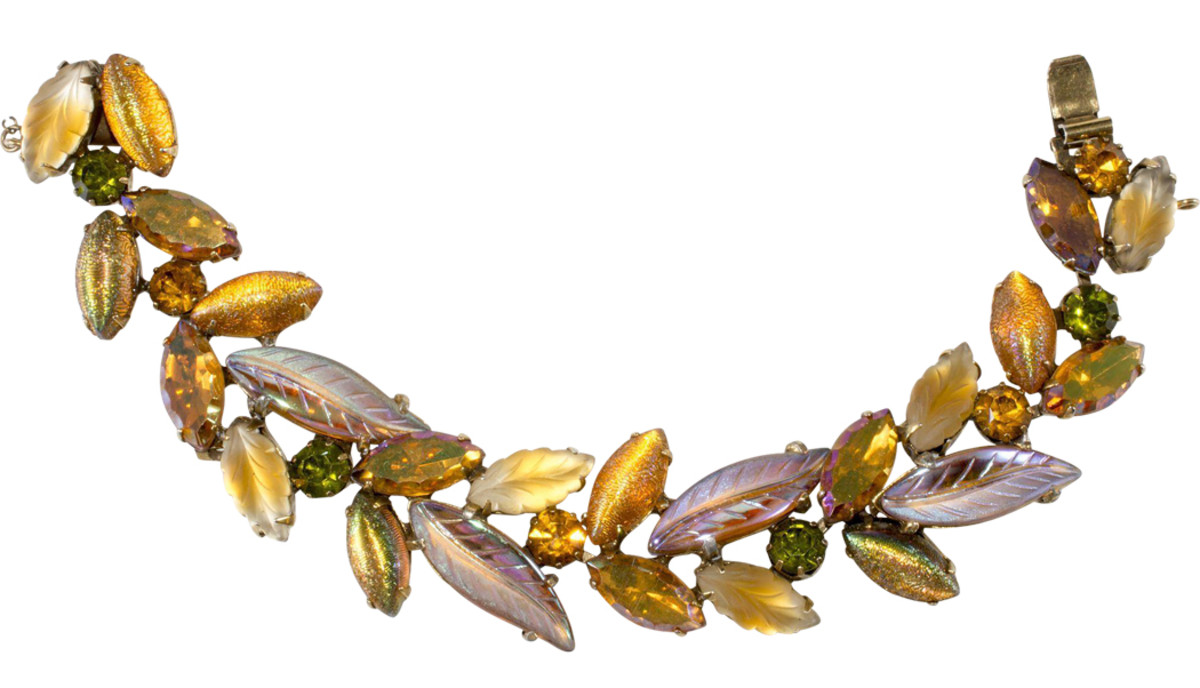
Courtesy Jay B. Siegel
Dangling elements always catch my eye, too. Kramer was very good at taking ordinary designs and adding dangling beads to make them more special. Some are clear faceted beads while others have round beads that add amazing pops of color. Other stones like Swarovski’s Alexandrite color changers that vary from lavender to light blue depending on the light source also decorate some of my favorite Kramer designs.
So, even though Kramer isn’t a brand collectors eagerly clamor to own beyond the most exceptional lines, in my opinion, their Diamond Look still shines brightly after all these years.
You May Also Like:
Exploring Costume Jewelry Basics
How to Identify Juliana Jewelry









